Track Saw Comparison – Which One Is Best For You?
Track Saws From DEWALT, Festool & Makita
Rob and some of his crew took a hard look at the major Track Saw models on the market and see how they “lined up”. With hours in the shop and critical analysis of each saw’s features and performance we are providing readers with a comprehensive look at each saw’s bright-spots and areas for improvement. These tools allow you to make long, clean, straight, cuts in sheet goods, trim, and framing stock without lugging around a table saw. These are incredibly useful and versatile tools that more and more carpenters (and not just cabinet makers) are using on the jobsite.
This article encompasses the results of a DEWALT Festool and Makita Track Saw Head to Head, which includes our choices for best saw in a variety of categories from saw performance to model features. Think you’ve found the right saw for you? Then follow the links to a detailed review of your preferred model!
- DEWALT: DWS520 Track Saw
- Festool: TS 55 REQ Track Sa
- Makita: SP6000J Track Saw
Adjustments & Overall Ease of Use
Winner: Festool TS 55 REQ
The Festool TS 55 REQ, with competitive bevel range (-1 to 47 degrees), positive stops, micro-adjustable depth, clear front-of-cut viewing, a unique waste-side splinter guard, and the easiest blade changes of all the saws, the Festool wins for all-around ease of use and advanced features. Like most Festool products there is a lot going on with dials, adjustments, etc. The company makes precision woodworking tools, so although the saw is much more complicated than the competitors, it’s ease of use and intuitive controls and adjustments makes it shine in this category.
Makita has a straightforward approach to its adjustments that is simple and very easy to use. The blade change only requires one more step than that of a traditional circular saw. The only criticism from us is that the back bevel locks, generally a rare cut anyway, are tucked away, being located between the motor housing and the baseplate. Makita kept the saw simple, but packed it with useful and versatile settings. The SP6000J boasts a -1 to 48 degree bevel range and it’s ease of use makes it a close second in this category.
The DeWalt DWS520 also has a simple to use depth adjustment and bevel, but lacks a positive stop at 45 degrees, meaning you need to break out a square to get an accurate 45 degree bevel. The saw’s position in this category is primarily due to the awkward blade change. The blade change mechanism is far more complicated than that of the other saws and locking the plunge and arbor is finicky making for a slower and frustrating blade change. Putting the DEWALT model in last for adjustments and ease of use.
Power
Winner: Makita SP6000J
By the numbers, the Makita and DeWalt are tied here as far as amperage (at 12.0 Amps) but the Makita SP6000J boasts a 1,800 watts out which during operation which made the Makita feel faster and more powerful. Making it our winner in this category.
The DeWalt has solid power as well, with 1,300 watts out, and has no problem ripping stock quickly, putting it in second for this category. The Festool has less power overall compared to the other two saws, at 10.0 Amps with 1,200 watts out, and slows down a bit more quickly than the others in more difficult materials putting it last in the Power category.
Ergonomics and Comfort
Winner: DEWALT DWS520
DEWALT is the winner here, “hands” down, with very well-formed and comfortable handles with lots of overmold grip. The plunge mechanism on the DeWalt is done with linkage rather than a pivot. This means no odd wrist rotation when starting the cut but is also a little odd to use at first as it feels very different from the other two saws in the test, but regardless the major investment in ergonomic research from the folks at DEWALT paid off here.
Makita’s SP6000J places second with nicely formed handles that are very comfortable to use but don’t surpass the comfort of the DEWALT. The plunge action is very similar to that of the Festool, very smooth and comfortable, but again the awkward placement of a few adjustments hold the saw back as far as comfort, like the back bevel buttons mentioned previously and the oddly placed bevel detent override knobs.
The Festool TS 55 REQ features more of a stick style to the handles, with just a bit of over mold on the back of the primary handle. Bottom line, they simply aren’t as nice to put your hands on as the other handles.
Safety Features
Winner: DEWALT DWS520
DEWALT comes with a unique anti-kickback device that is integrated into the base plate of the saw as well as a riving knife, making it the safest saw based on our observations in the test. The Festool TS 55 REQ comes with an accessory, read NOT included, anti-kickback stop that is attached to the track and it also has a riving knife putting it in second in this category.
Finally, the Makita SP6000J has a unique anti-tip feature that engages with a groove on the track to prevent the saw from tipping, especially when making bevel cuts. But with the lack a riving knife or any anti-kickback device we put the Makita in last. Although, the lack of riving knife proves to be quite useful during some plunge applications, as the riving knife can sometimes cause more problems than its worth.
Market Price
Winner: Makita SP6000J
Budget is an important consideration when buying tools. Currently Makita’s is the lowest priced, with DEWALT coming in second, and Festool being the most expensive (no surprise there). In fairness most users recognize that Festool is almost always considered a different class of tools, but as other components of our test demonstrate the DEWALT and Makita produce as high a quality of cut and deliver excellent dust collection.
Storage Case
Winner: Festool TS 55 REQ
This is a precision tool and needs a good case for protection and accessories. Systainers are known to be durable and easy to use. The case insert has molded spaces for all the accessories that come with the saw and even space for the accessories that are NOT included. There’s also a photo on the cardboard insert on the underside of the lid that shows you where everything goes. Finally, because Festool features the removable power cord, you will never run into the age old case problem of no room for the cord!
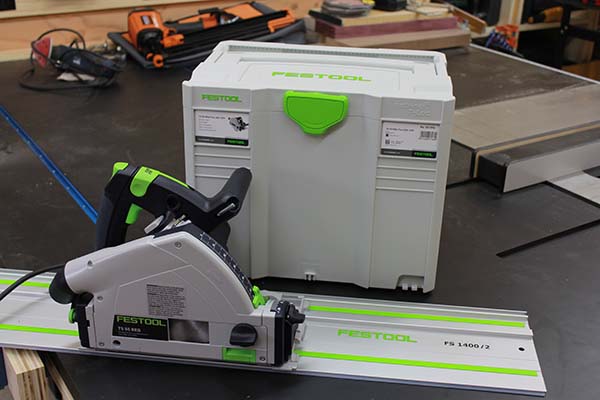 The Makita SP6000J comes with a roomy plastic case with molded spaces for some accessories and plenty of room for the rest. The saw does not seat as well in the case as it does for the other saws but the size is right so the tool does not move much in the case. We put the Makita case at second place.
The Makita SP6000J comes with a roomy plastic case with molded spaces for some accessories and plenty of room for the rest. The saw does not seat as well in the case as it does for the other saws but the size is right so the tool does not move much in the case. We put the Makita case at second place.
The DEWALT DWS520 case is good sized but doesn’t have an easy spot to store basics like track clamps and the cord while generously long is a bit stiff and hard to coil up and get in the case. DEWALT comes in last in this category.
Accessories
Winner: Festool TS 55 REQ
Accessories can really enhance the overall usefulness of a tool, by expanding its capability and scope of use. Not really an objective view of the tool but we found it important to review for this head to head. With “System Integration,” Festool has a wide array of accessories that allow for use of the tracks with other tools in the Festool line and allow for a great deal of versatility with the TS55 REQ. This includes the usual:
- Miter gauge guide rail attachment
- Right angle guide rail attachment
- Router guide base
- Guide rail connectors
- Clamps (quick release and screw F-style)
- Multi-function table
- Detachable cords that work with all Festool tools
However, do not enter into this system lightly, as the cost for this level of engineering and quality is very high. As we discussed previously the Festool is not cheap.
Makita’s SP6000J and DEWALT’s DWS520 are pretty much tied in this category and feature miter gauge guide rail attachment, router guide base (keep this in mind if you own a DEWALT or Makita router), guide rail connectors, and clamps. Makita does makes a rip guide similar to a circular saw rip fence, which is great when you want to use the saw on small work pieces that would make the 55″ track awkward to use. Unfortunately, this doesn’t put the Makita ahead over the DEWALT. Bottomline, you can’t really compare these saws to the myriad of accessories that Festool offers.
Dust Collection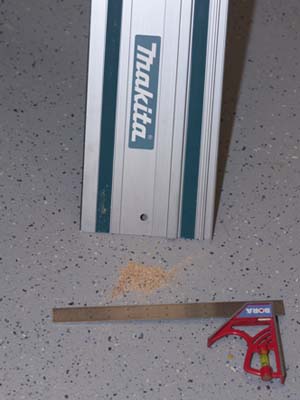
Winner: 3-Way Tie
There’s a huge emphasis on dust collection these days due to safety concerns with prolonged exposure to most kinds of dust. Good dust collection also makes for a cleaner jobsite and a happier client in cases where you’re working in occupied spaces.
Regardless, our tests resulted in a three-way tie here as all the tools performed admirably, with no discernible difference in the amount of dust that escaped collection. Which was very little all around. As you can see from the photos the volume of dust that we swept up from below the cut was minimal considering that even a table saw hooked up to dust collection would leave more behind even when used with a wet dry vacuum or dust collector.
Quality of Cut
Winner: 3-Way Tie
These are precision tools that need to provide a very high quality of cut to be viable contenders in their field. Here too we found that there was little difference in the quality of cut when we used the same model of blade on all saws. There was minimal tear out on cross cuts in veneered birch ply, a light brushing with 220-320 grit sandpaper would get rid of it. With the stock blades the cut quality was very similar and excellent in all cases.
Overall Track Saw Winner
Winner: Festool TS 55 REQ
The ease of use, features, huge range of accessories, and refinement of the Festool make it the real winner. However, the other two tools are solid performers with excellent quality of cut, have their own unique features, and are still easy to use. If your budget or personal preference mean you’d prefer either the Makita or DEWALT you really can’t go wrong with any of these tools.
About the author
11 Comments
Leave a comment
Disclosure
Product reviews on this site contain our opinion of a product or service. We will always strive for objectivity and transparency in our reviews. Our goal is to provide readers with honest, objective information based on our own experiences. We never have and never will accept payment in exchange for a positive review. Many of the products that we review are provided to us for free by a manufacturer or retailer. In some cases, we also have advertising or affiliate relationships with manufacturers and retailers of products and services we review. For additional information please visit our additional disclosure policies.











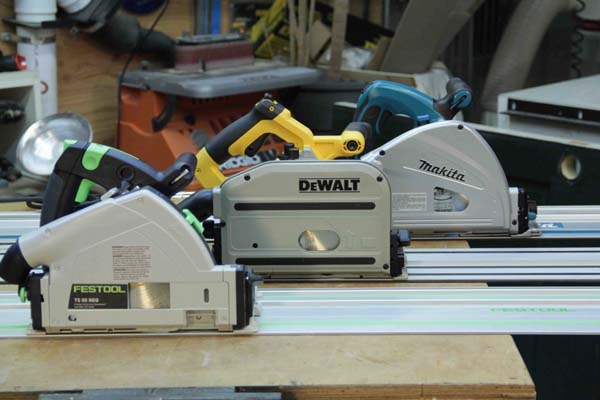
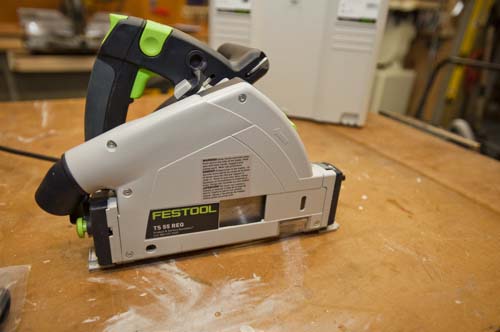
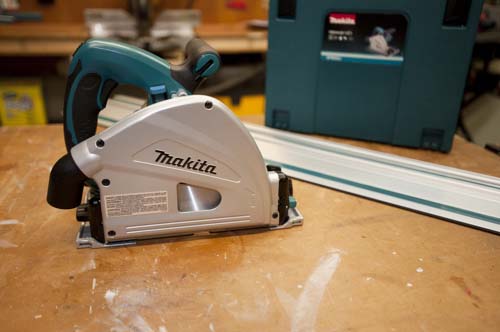
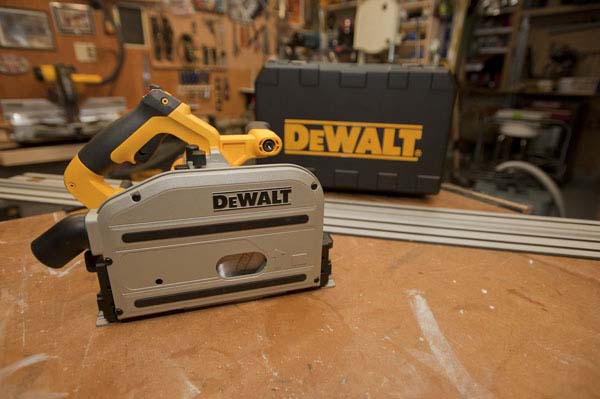
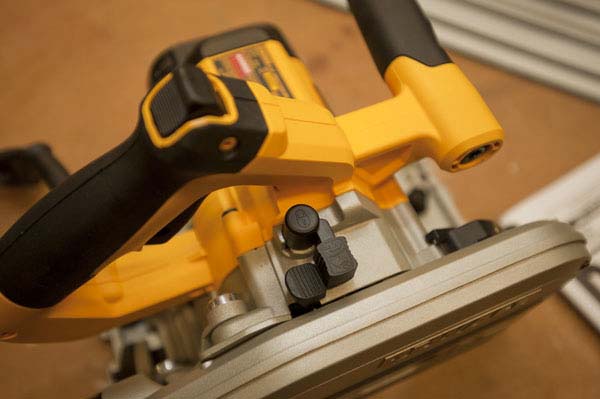
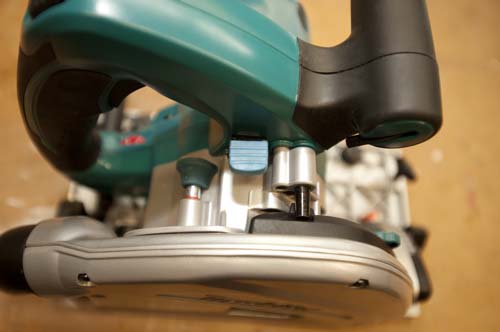
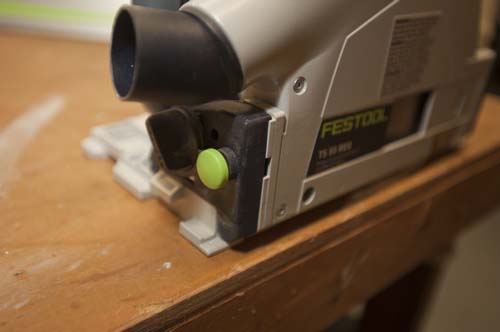
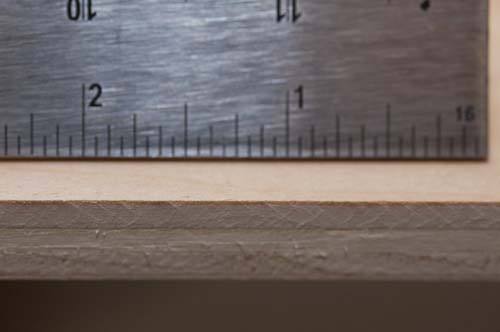
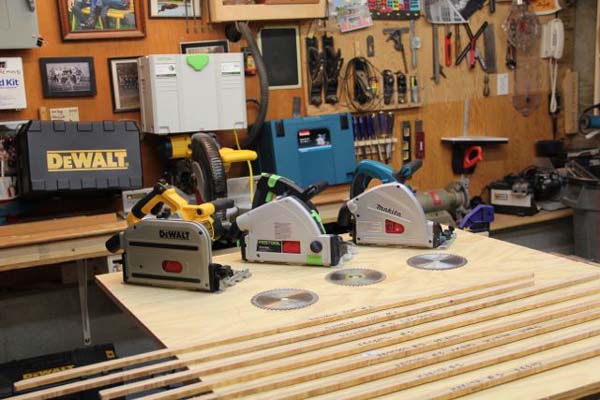
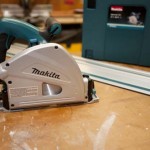
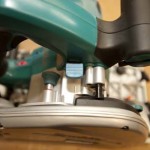

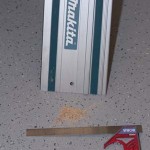
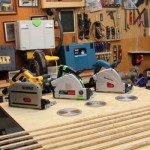
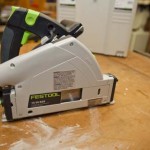
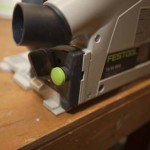
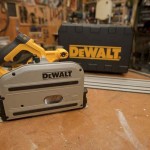
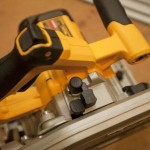












Nice comparison; these are worthwhile tools for any serious carpenter.
The anti-kickback attachment was included with the 2 Festool Saws we purchased in the past; I can’t believe they would charge extra for a safety necessity.
We had to buy allen screws to make the depth micro-adjustable on the older models; it’s good that they rectified that.
I did a lot of research when looking for a track saw and ended up going w/ the Makita because of its price & close comparison to the other 2 saws. I have to say it’s been a pleasure to work with. It’s become my favorite tool in the shop, and I’ve found myself looking for projects to use it with. From all the reviews out there on the forums, it sounds like others say the same thing about the track saw model they chose to go with, so in the end, I don’t know if it matters which one you go with – I think you’ll enjoy using any of them!
Jeff – Thanks for sharing. All three are top quality saws with very slight differences! I think when more people get a chance to use a track saw they will be hooked.
Thanks for the comparison. It was very informative. I do believe that cost should have been a category too. I am having a hard time understanding how the most underpowered tool, most uncomfortable tool, and most expensive tool came in first considering that the quality of cut was equal in all 3. I haven’t checked but I believe the Festool saw, track, and clamps would be several hundred dollars more than the other two systems. The difference was hardly mentioned.
David – Cost is certainly an issue and for some it will be the deciding factor. The Festool runs about $585, Dewalt is $418, and the Makita is $399 (all prices from Amazon this morning).
The reality is all of these track saws perform very well. The differences in power and comfort are small differences. I will say the Festool offers more options and integrates into their “system” in a way that gives it some advantages. I think you’d be happy with any of these tracksaws to be honest. Good luck.
Thanks Todd. I think the price for the saws are pretty competitive but my dilemma comes from factoring in the tracks. My first thought was to go with the Makita but the 110″ track was $259. Only the Dewalt can be purchased with a 59″ and 102″ track and it’s $579. The festool with matching tracks would be $885. I feel that a $300 difference should be directly justified especially considering that so many people complain about the power of the Festool. I will need to buy a track saw in the next couple of months and feel that I may find the Dewalt on sale between now and then. I’m keeping an open mind and could still be convinced to part with an extra $300 for the right reason because at 44 years old I do consider this a once in a life time purchase. But I also know that an under-powered saw is bad for the cut and the blade and the first time it bogs down I will be wishing I had gone with the Dewalt. Of course I realize I may have an issue with the Dewalt and be wishing I had gotten the Festool.
After recently going into business for myself I no longer have easy access to the shop and the table saw. I will be using the track once a month for 1 or 2 built-ins typically 48″ wide. I have a nice Dewalt portable table saw with 16″ rip capacity. So I think, considering my needs, the Dewalt would be more than sufficient. Then I could take that $300 and replace that holy muffler on my truck! or upgrade my router table?
Sorry to ramble but I feel that others may also be in my situation and that this discussion might help.
David – No worries! We write these to help out guys like you, especially on big price items. As with anything it all comes down to the tasks you’re most likely to use the saw for. If you’re ripping down plywood/sheet goods then any of these will do a great job. I used the DEWALT for several years before the Festool and I absolutely loved it.
If you’re going to be cutting down thick, hardwood counter-tops for example, you might want the bigger motor. If you don’t own a bunch of other Festool products then you likely don’t care what sort of storage box you get. Sounds like you’re on the right track, the extra $300 can buy another decent tool, and you won’t be sorry about the DEWALT.
I think the Festool wins out with little things that can effect very precise cuts. They offer the splinter guard which works very nice (although the others do a decent job just from the gaskets on tracks). The festool also offers stops you can put on the track which can be really handy.
It’s a real toss up, but from my own experience, I highly doubt you’ll be sorry with either of them. Thanks for sharing your thoughts!
I am self-employed carpenter as well. You hit it on the nose really. That $300 could be used to purchase another tool to make life easier, faster more profitable. Or it could be spread out to cover other expenses (glues, screws, fasteners, gas….the list is endless).
It’s something I have to think carefully about because, sure it would be nice to have everything Festool but will the massive investment be a game changer for me? I don’t think it will. I have gotten more or less the same results from other tool brands. I’ve used pretty much every brand out there and I have not really picked up on any significant advantages from festool besides better dust collection.
So for me, I think I’ll save the $300 for another quality tool and go with the Makita. I’ve always had great results with Makita tools so this is a no brainer.
I had pretty much forgotten about this thread, then I got a notification via email this morning. Just in case this thread is still searchable and people are trying to make up their minds I will give an update.
I did buy the Dewalt with both tracks 2 1/2 years ago. I loved it from day one. The factory edges are no longer the “good” edges! I’m very critical and if I thought there was something to complain about I would be more than happy to. I will say that if you have a project that consist of more than just a couple of cuts a table is a must to make sure the plywood is supported no matter the direction of cut. The long track is difficult to safely transport to the job-site if you have a topper on your truck. It has to go in diagonally. So I don’t carry it unless I need it. The short track is perfect for cutting off doors and it has earned a permanent place on the truck.
When I first got it I babied it. It was only to be used for cabinets. But it’s so handy that I started using it for more daily things like plywood on the inside of garage walls, cutting a 70 degree angle on an oak tread, etc. I mean, it’s a tool that both saves time and gives better results. It’s hard not to use it when needed.
So with all my rambling out of the way I would like to sum up my point by saying that the savings over the other saws were enough to allow me to feel comfortable using the saw more often and on a variety of projects. I could literally buy the 2 tracks and a saw blade for the extra cost of the Festool. That means a lot to me.
[…] The Bosch CCS180 really proved itself in the endurance assessment leading the pack with over 220 feet of plywood ripped on ONE charge. The Bosch stayed in the middle of the pack in most other categories and didn’t get a shout out for any other category except power. But we named this a top contender for overall saw since at the end of the day the number of cuts and the power the saw delivers is the most important feature a saw can have. If you like THIS article check out our other HEAD TO HEAD Articles, like the Track Saw Shootout! […]
I am tooling up for a kitchen (and other projects) Your info is helpful when making tool purchase decision. Keep it up!